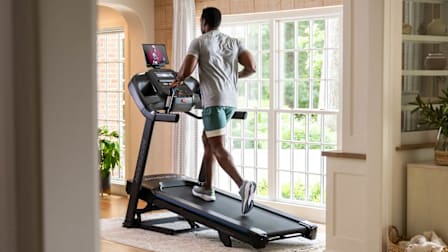1. Check your shoes. Too big and they may be a tripping hazard. Too tight and they can alter your gait, which can lead to ankle, knee, or even back pain. If you have osteoarthritis, choose stable, supportive shoes over flat, flexible styles. When researchers compared both types, those wearing the supportive shoes reported less joint pain, according to a 2021 study in the journal Annals of Internal Medicine.
2. Start slow. Even if you have concerns about injury or stamina, you’re almost always better off walking than not, says David Sabgir, MD, a cardiologist in Columbus, Ohio, who created the Walk with a Doc program to get his patients moving. Being sedentary doesn’t protect you from injuries. In a 2012 study published in the Journal of Physical Activity and Health, researchers compared injury rates of exercisers with an inactive control group over the course of a year. There was little difference. If you haven’t been active, start with 5 to 15 minutes of walking, two to three times a week, and gradually build up. You can also break up a walk into short strolls—for example, 10 minutes in the morning, afternoon, and evening—and still get the same health benefits.
3. Warm up. Go at an easy pace until muscles and joints feel loose. Five minutes should do it, but take as long as you need.
4. Choose well-maintained routes. Uneven sidewalks or paths with rocks, roots, and ruts are tripping hazards. Even if you don’t have balance issues, you’ll reduce your risk of injury by sticking to level, paved paths. And pay attention when you come to a curb. In a National Center for Injury Prevention and Control study, curbs contributed to more than 9,000 falls a year among older pedestrians.
5. Use walking poles. Sabgir recommends them for anyone with balance issues. Poles provide stability and can take pressure off painful joints, so you’ll feel more confident and may walk longer and farther.
6. Strengthen your core. One of the most common changes that Lee Scott, a walking coach in Toronto, has seen in her older clients is that they start to bend at the waist and lean forward as they pick up their pace or get tired. “Core training improves posture, which improves walking gait and decreases the chance for tripping,” she says.
7. Practice good posture. Looking down can cause neck and back pain. Instead, keep your chin level with the ground and look about 10 to 20 feet in front of you. You’ll reduce upper body stress and be able to see any obstacles in your path.
8. Unplug. Though listening to music or audiobooks is often touted as a way to stay motivated when you walk, it can divert your attention. Walkers distracted by music were less careful when crossing intersections, according to a 2021 study in the journal Accident Analysis and Prevention.
9. Wear bright colors. No matter what time of the day you walk, make yourself visible. Wearing red, yellow, orange, or hot pink enables motorists, cyclists, and skateboarders to see you. If you must walk at dawn or dusk, add reflective gear and carry a flashlight.





















